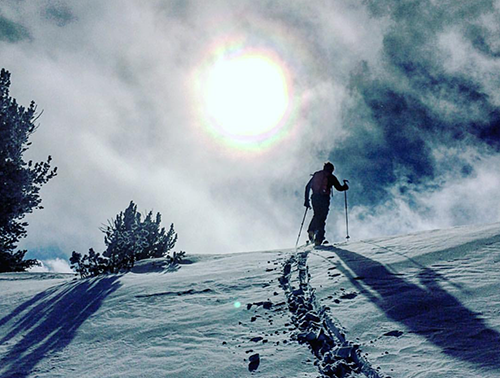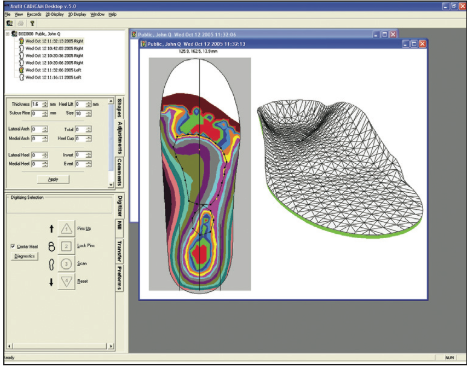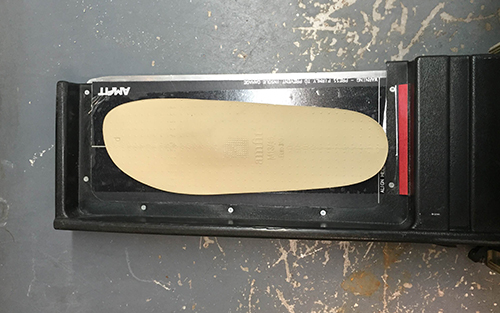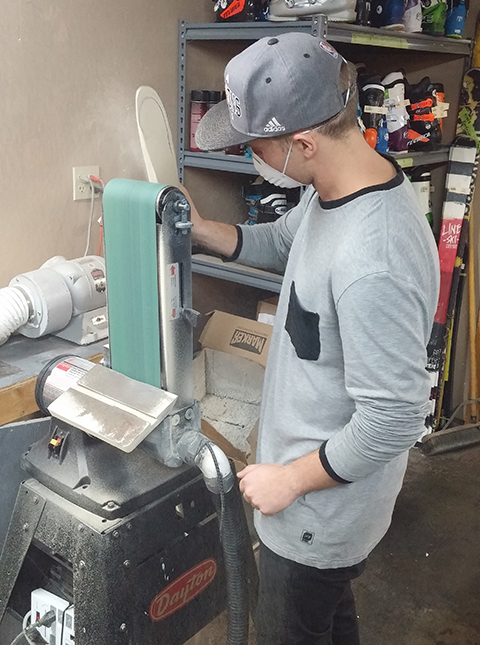The Amfit Footbed Difference

All the snow in the world doesn’t mean anything if you’re stuck inside sipping hot chocolate because your boots are too painful to wear. Sure, that might be a bit of an exaggeration, but it’s not an exaggeration to say that comfortable footwear can take a day from good to great, while uncomfortable footwear can be the difference between enjoying a day of skiing with friends and calling it quits early, before the last lift stops spinning.
So, how then does one go about ensuring the proper fit in their ski boots? Well, with Granite Chief’s system, you actually get the precision and comfort you would from a professional podiatrist’s office, in the comfort of your neighborhood ski shop. That’s all thanks to the Amfit Insole Fabrication System used here.
The Amfit system is superior to other systems for a few reasons. The first is the fact that the Amfit system lets you create an unweighted footbed. Unlike older techniques, where the skier stands on top of something, putting all their weight onto it, to make an imprint, the Amfit lets you scan the foot while unweighted. With the older, straighter style of skis, it required that a skier constantly be engaged forward in order to pre-load the tips of the skis, prior to engaging a turn. In that style, a weighted scan of the foot was fine, possibly even preferable. However, as skiing has changed, so have the needs of the insole and boot. Since so much more of skiing happens laterally now, the stances have become flatter, and less forward ramp angle is needed.
Rather than using your body weight to make an impression into a mold, and casting an insole from there, the Amfit system actually consists of hundreds of tiny rods that come upwards to meet the bottom of your foot. This allows you to stand naturally, unweighted, and in a more natural angle.

From the scan of your foot, a “topographic” map of your foot is then displayed on the screen, and the technician can either accept it, or easily re-scan the foot. As you can see in the image, the precision afforded by the Amfit system allows us the precision of millimeter differences, instead of just “guesswork” as before. Unlike traditional systems, the Amfit doesn’t actually use any raw materials until the perfect scan is made.
Once the technician has a scan that he or she is happy with, the image is transferred to the mill, and the “raw” footbed is transferred to a tray, in order to be loaded into the mill. The mill functions as a sort of reverse 3D-printer, running off of a CAD program. You start with a basic “block,” as you can see in the picture, that is then milled down with what is essentially a laser-guided dremel tool.

Once the milled block is removed, all that’s left is for the technician to trim it to fit the inside of your liner. Then, of course, there’s the little matter of you getting out and ripping all the sweet lines on the mountain! That one’s on you though. We’re just here to help make it happen.
